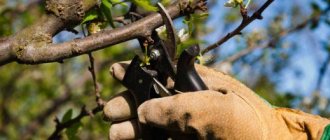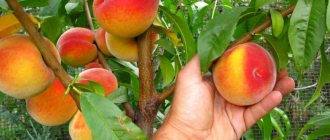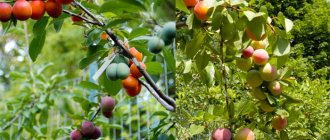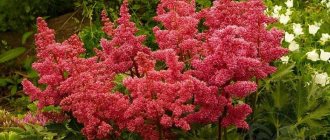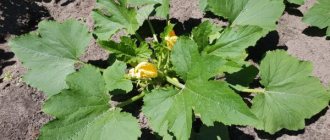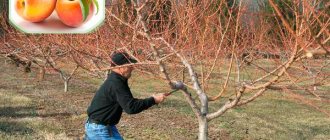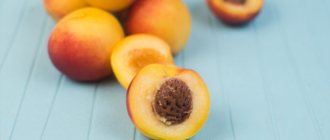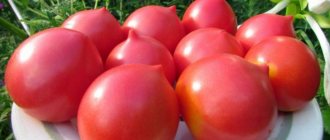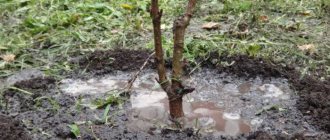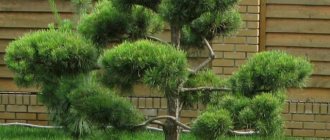History of the variety's creation
This peach variety was obtained as a result of breeding work by amateur gardeners. They carried out work on grafting Brugnion rootstocks onto cherry plums. The result was a Voronezh bush peach, which received its taste and characteristics from the peach crop, and its resistance to frost from the cherry plum.
Russian gardeners write in reviews of this variety that they successfully grow Voronezh bush peach in the following regions:
- in the Krasnodar region;
- in the Leningrad and Moscow regions;
- in the Central and Central Black Earth regions;
- in the Far East;
- in the Urals and Siberia.
Voronezh Peach - photo
Diseases and pests, methods of control and prevention
Diseases and garden parasites can slow down the growing season and affect fruiting:
- In early and mid-summer, the main pest of the Voronezh bush variety is aphids. The insect damages young shoot tips. It is recommended to treat the peach with Iskra DE as a preventive measure at the moment the first leaves appear.
- Foliage may be damaged by fungus. Visually, dotted bulges appear on the leaf, and then holes and perforated spots appear in their place. Treat the bush with preparations containing copper, for example, “Hom”. For preventive purposes in the spring, the trunk and branches are whitened with lime and copper sulfate: 1:2.
- The most common fungal infection in Voronezh bush peach is leaf curl. Large bumps are formed on them, colored dark burgundy. To eliminate the cause, it is necessary to use copper-containing herbicides.
These are possible options, they are rare due to the high resistance of the Voronezh bush peach to diseases and pests.
Voronezh peach: description of the variety and its characteristics
Voronezh bush peach is a mid-early variety with fruit ripening in the first or second decade of September.
The bushes of this stone fruit crop are not tall - the height of the central trunk usually does not exceed 2.0 m. This peach also has a columnar variety - a compact tree up to 1.6-1.7 m high. Thanks to this size, this peach is easy to care for, as well as picking ripe peaches.
Photo of Voronezh peach
The central trunk of this shrub is dark brown and very flexible. The foliage is oblong, light green, with small teeth along the edges. The shoots on which the fruits appear are elastic, thin and flexible, not fragile. Their color is the same as that of the central trunk.
The flowers of the Voronezh bush peach are large with pale pink petals, after each of them an ovary is formed.
Interesting!
Ripe Voronezh fruits are round, medium in size, weighing about 110 g. The columnar peach weighs more - up to 170 g.
The skin is thin, fleecy, harsh, rich orange in color with a characteristic red blush that covers most of the surface of the ripe fruit. The color of the juicy porous pulp is dark yellow. The taste of picked peaches is sweet with a slight sourness.
Peach varieties!
Greensboro peach Redhaven
The harvested crop can be transported over long distances, while the fruits do not “spread” or burst, and do not lose their beautiful appearance and taste. Ripe peaches can be stored in the refrigerator for up to a week, during which time they do not spoil or lose their sweetness.
Since this variety belongs to brugnons, it is impossible to separate the stone from the pulp even from overripe fruits.
The Voronezh peach is distinguished by its endurance and ability to bear fruit from the second season after planting in a permanent place. If this perennial is pruned correctly, it bears fruit better without taking up much space in the garden plot.
At the genetic level, the Voronezh peach has high resistance to long periods of drought and plenty of sun on the site during the day. The more sunlight hits ripening fruits, the more sugars are formed in them, and the sweeter the peaches.
Voronezh Peach - video
Watering this shrub should be moderate - the soil should be moist, but without stagnation of moisture.
. When humidity is high, some of the ovaries fall off.
Due to the high yield and compactness of the bushes, Voronezh peach is grown not only on personal garden plots, but also on an industrial scale for further sale. Ripe peaches are consumed fresh, but many housewives claim that ripe fruits of this variety make delicious, aromatic jam and compotes.
When grown on an industrial scale, ripe products are supplied to stores for sale, as well as for preparing wort for juice.
Characteristics of the variety
A feature of the peach is its endurance and ability to bear fruit in the second year after planting. When pruned correctly, the shrub does not take up much space on the site and is not afraid of pests.
Drought and frost resistance
The Voronezh bush variety is genetically predisposed to tolerate high temperatures without constant watering. Feels comfortable all day long in direct sunlight. The more ultraviolet radiation, the sweeter the fruit. Like any plant, moderate watering is necessary; at high humidity, the crop loses some of its ovaries.
The “Voronezh bush” peach is a winter-hardy variety created specifically for Central Russia. Tolerates frosts of -35 °C; if the root system freezes, it is completely restored in the spring. To prevent the death of the plant, “Voronezh Bush” takes shelter for the winter.
Does the variety need pollinators?
Peach has bisexual flowers - the variety does not need pollinators. When placing on a site, it is necessary to take into account that the bush will not produce a harvest if a tall fruit tree grows nearby. The crown will become an obstacle to the penetration of solar heat and light.
Productivity and fruiting
According to the description of the variety, the Voronezh peach is a mid-early crop; harvesting takes place in the middle or end of September, depending on the weather. Fruits abundantly due to self-pollination. What makes this variety attractive is its ability to produce a harvest the following year after planting. On average, 20–30 kg of fruits are harvested from one tree. It contains more glucose than acids, so the taste of the variety is sweet with slight sourness and the aroma inherent in the culture. The peach is tightly attached to the stalk, so when it reaches biological ripeness, the fruit does not fall off.
Area of application of fruits
Due to its compactness and high yield, the Voronezh Bush variety is grown on personal plots and on farms. Mostly consumed fresh. The peach is stored without losing its taste and aroma for up to 6 days and tolerates transportation well. At home, it is suitable for preparing preparations for the winter: compote, jam. Industrial cultivation of peach is carried out for the purpose of supplying it to the retail chain and obtaining mash for juice.
Resistance to diseases and pests
The fruit is immune-adapted to temperate climate conditions. Most infections and garden pests that affect crop varieties in southern latitudes are not dangerous for the Voronezh bush peach. Fungal diseases infect the plant if the humidity level is exceeded. For this reason, the spread of aphids is possible.
Advantages and disadvantages of the variety
The advantage of Voronezh Bush is:
- low temperature tolerance;
- complete recovery after freezing;
- productivity;
- self-pollinating;
- compactness of the bush;
- resistance to fungal diseases: clasterosporiosis, powdery mildew;
- high assessment of taste;
- well stored and transported.
Disadvantages include the need for shelter for the winter, constant pruning, and poor separation of the pit from the pulp.
Frost resistance of Voronezh bush peach
Voronezh bush peach was bred specifically for cultivation in the Moscow region, the middle zone and other regions with similar climatic conditions, therefore it is characterized by fairly high resistance to frost - it can easily tolerate cold temperatures down to -35 degrees Celsius
. If its roots freeze, then in the spring it will recover almost completely. But it is better to cover this shrub before the start of winter to protect it from freezing.
Apricot varieties!
Apricot LEL Apricot ROYAL
Voronezh peach: reviews from those who grew the variety
Sergey, 49 years old, Novgorod region: For several years I tried unsuccessfully to grow peach trees on my plot, but they all froze. 3 years ago I purchased a Voronezh bush peach seedling and planted it on the plot in the spring. Over the summer, this bush took root and grew stronger, did not freeze over the winter, and next season I already harvested a good harvest of ripe peaches. In the fall, I planted several more seedlings of this variety and a year later I harvested quite a good harvest from them. There was enough for food and jam. My wife even made peach compotes - their taste and aroma are amazing.
Olga, 59 years old, Tambov: This peach has been growing on my plot for the sixth season. I can say that a year after planting it began to bear fruit, and the fruits were large, sweet and fragrant. But last season they began to get smaller, so I had to plant new bushes. In our region, they should be covered every year before the onset of cold weather and pruned in the spring. But overall, I like the variety - disease-resistant, high yield, tasty fruits.
Victor, 41 years old, Samara region: For our region, the Voronezh bush peach is the best variety of this stone fruit crop - with good shelter in winter it does not freeze, and if some of the branches or roots freeze, they quickly recover. After we tasted the first fruits from our peach bush, we immediately felt how much tastier and more aromatic they were than store-bought peaches. At the moment, there are already 5 of these bushes bearing fruit in my garden, we are harvesting an excellent harvest, enough for both food and twists.
Voronezh bush peach was bred specifically for cultivation in central Russia and regions with similar climatic conditions
. Its main advantages are high yield, resistance to frost and periods of drought, as well as high immunity.
Pollinator trees for Voronezh peach
This stone fruit plant produces both male and female flowers at the same time, so the Voronezh peach is self-pollinating and does not require the presence of nearby pollinating trees
.
This perennial cannot be grown in the shade - it will practically stop producing flowers, ovaries will not form, and as a result there will be no harvest. Therefore, it is planted far from other fruit trees and country buildings, which can block the light of this plant.
Productivity of the Voronezh variety
Depending on the climatic conditions in the growing region, ripe fruits from these bushes can be collected in the second or third ten days of September
. Fruiting of this variety is abundant and stable. In addition, the Voronezh bush peach begins to bear fruit the very next year after planting - this is another advantage of this stone fruit crop.
From one mature tree you can collect up to 30 kg of ripe peaches. They emit a pleasant aroma typical of this plant. The fruits are tightly held on the stalks and are not prone to falling off even after full ripening.
Advantages of the variety
The main advantages of the Voronezh peach variety are:
- high frost resistance (according to the manufacturer’s description up to -35 C);
- the next season after freezing, the tree is able to fully recover;
- high yield;
- the variety is self-pollinating and does not require the presence of nearby pollinators for good fruiting;
- the bushes are compact and not very tall;
- high resistance to cluster blight and powdery mildew;
- excellent taste of Voronezh peach;
- The harvested crop tolerates transportation well over long distances and can be stored in the refrigerator for up to a week.
Among the disadvantages of Voronezh peach, it should be noted:
- bushes need to be covered before the onset of cold weather;
- the plant requires regular pruning;
- The bone is difficult to separate from the pulp.
Voronezh peach: how to plant seedlings correctly
The Voronezh bush peach culture can be planted in open ground both in spring and autumn.
. To prevent trees from freezing over the winter, planting times in each region may differ.
In the Central regions, this peach can be planted in early October.
. In the Far East, Siberia and the Urals, it is better to postpone the planting of plants to the spring, so that they have time to acclimatize and strengthen before the onset of winter, and the roots have grown sufficiently.
The place for planting the Voronezh peach should be well lit by sunlight and protected from gusts of cold wind. The best type of soil is medium loamy with good air permeability and moisture exchange. Acidity – neutral or slightly alkaline.
The main condition is that there should not be too much calcium in the soil, because the Voronezh peach does not develop well in such soils.
Many gardeners prefer to purchase seedlings already with varietal rootstock, which can be purchased at a specialized store.
The main requirements for Voronezh seedlings:
- the plant must have at least 3 shoots;
- bark – without visible damage;
- roots - healthy, free of damage and dry pieces.
There is another way to grow the Voronezh peach variety - from the pit. It takes longer, but is also quite effective. Plants grown from seeds retain all parental qualities.
How to plant a peach correctly
The Voronezh peach pit is planted in a pot with a nutrient substrate in early September, and the sprout usually appears at the end of April - the first ten days of May
. At home, this bush peach is grown throughout the year, and with the onset of warm spring days, the plant, along with a lump of earth, is transferred into a prepared hole.
The diameter of the landing pit is 0.5 m at the same depth
. A layer of drainage at least 10 cm thick is laid at the bottom of the pit. Fine gravel or crushed stone can be used as drainage. Then a nutrient substrate made up of garden soil, humus and a kilogram of ash is poured into the hole.
The seedling along with the earthen ball is installed vertically, the remaining soil is poured into the hole and compacted well. For each planted tree you need to add 15-20 liters of water.
After planting, peach shoots should be trimmed, leaving only 25 cm of the total length.
Forum statistics
207033 Messages in 1634 Topics from 5593 Users. Latest user: Amaya Latest message: “Ripening dates are different...” ( Today at 00:37:47 ) Latest messages on the forum.
Now on the forum
24 Guests, 7 Users
Users in the last 15 minutes: Alexey V, Anatoly Sivkov, yotmast, Sergey Fer, znakomij, Ilya 77, Andrey Gladilin [Blocked] [Section Moderator] [Forum Moderator]
Maximum online today: 77 . All-time maximum online: 2758 (28 July 2021, 17:22:51)
Users who visited the forum in the last 24 hours
Total: 302
(Visible: 301, Hidden: 1) 1963, Anatoly Sivkov, yotmast, Alexey V, Sergey Fer, znakomij, Ilya 77, Andrey gladilin, Alexander K, Tatyana A., Belgorodets, in Astrakhan, hanter64, Oksana Kopp, Tatyana B, sem_en, Alex65, Vladimir 153, skier, Igor Viktorovich, slavalimon, Alexander Vl., Primorets, OlgaOs, SANYCH, 31rus, mystic69, DorontsovPeter, Andrey Tsvetkov, Buba, Cherkessk, igor222, Andrey76, Elena Z, vlad51, Kenig, Nikolay Rex , Sergey 1965, Vladimir Buturlakin, DSW, psv1960, Dmitry 77, Vasily V., Vyacheslav03, Natalia Nikolaevna, Sergey Tashchiyan, Nikolay S., Igor Sergeevich, alexsandr, kvg, Pioneer, Ekaterina Polyanina, nicson7, Elena Aleshchenko, Alexander-ask -34, Verona, Igor F., Taker, Quiet, Henry, Yuri72, L.A.P., Gaivoronsky Yuri, Sergeevich, Sergei Chistokletov, Svetlana Streletskaya, Galinka, Alexey Deminov, Naumov Igor, Vyacheslav136, Vardan, Gloomy, Katrin , AndSanych, vladimirM, Mikhno Alexander, Ded31, Filippov Oleg, Vladimir ++, Svetla777, Mikhail Alekseevich, Lydia58, Mikhail77, ALEXANDER BRYANSKY, Vladimir-kanevskaya, leonidych, DIL, Amber7394, Marina Protasova, TITOVA LYUBOV, Linx, alexander66, Natalya M, Mikhail Fesenko, ElenkaF, Amaya, Alexander71, Boris 1952, tsv, Maximilian, 25nata35, nadia, GALINA ANOKHINA, Igor_K, Alexander Kolesnikov, Ivan Levin, Pitko, weather forecaster, eSAa, cecet71, atseton, Alexander Smirnov, Vladimir Kostochkin, Vladimir Berdnikov, Gocha, pioneer-2, mers, LeXa_KoT, Sergey 61, Sergey Yuryev, Erem, alexss, Evgeniy52, Skif, lomakin1969, Vladimir Kovba, dayton, Yuri Semyonov, N.A. Sokolov, Pavlentiy, Sa-shura, Volgogradka, Dmitry Anatolyevich, Grandfather Igor, Andrey Lis, Bublichenko Alexander M, Marina Krymskaya, stenlly2010, irahelm, Vyacheslav Vladimirovich, Vladimir Shilov, Aprel, Dmitry Badaev, gheo55, Yura, y_fed, rambo, Yagodka, Valentina Ivanovna, Kryn, oleg9f, DED2, Korotina Svetlana, Delivered Oleg Ivanovich, Eduard., santra, L2k2m7n, Alexander48, Viknik, Andrey 31, m2d, Marshal, Valery Rastorguev, Serg1707, Soshnin Yura, Amateur gardener, Galina, Vasily1111, gardener, marlin64, Salex, sergei, Sergey Ko, Ramiz, victor_, kosmos, potap05, Yuri 36, VitaliySD, Inna161, Vova Kapran, Vladimir Shcherbinin, Valerie, niy1, cfibr, Andrey68, Elvira2017, kulol3, Slavka, thanatos, Serzh1978, Realist, Artur53, max2008-01, LOZA , AlexanderD, Grandfather Young, Natasha, Zayac, ketch, Rita, alx-74, Iv Iv, Alexander150, Igor K, SNovichek, Vasily Viktorovich, VeraNiK, kdm57, Veniaminovich, Boris Sokolyansky, therapist, Capricorn, 77volt, , vikbublik, neposny , Evgen, Victoria Aleksandrovna, Serezha 64, Wintel, Airbone, teri, Sergey Lomonosov, Khramov, serginio, Leonty Yarygin, Irina O., Ser, Nadezhda Grig, zsb, Lyubov S., netolya, Saisan, Agryzkov Alexey, Vadi, Zinaida , Vadim, Alexander Taganrog, Sukhonon Sergey, Snezhinets, Evgen_26, NAU_63, Masha_Sadovod, Gennady163, Krasnovlad1, Alexander Zinoviev, Vasily 53, Roman Fedorovich, Tis, Alexey Sergeyevich, Arnya, Zhek, Nurtas, Kradievska, 64nikolay64, Nick041, Li, Nick041, Li, Nick041, Li, Nick041, Li ZA, Valentine Medvedeva, Sergey43, Andrey S., Nikolay Lipunov, Mst, Vertuoz2, Vladimir VS, NatalyaMed, freesia, Kinna, Mikhail Michurinsk, alekcsan1, VALERY TAMB, Sasha57, MikhAf, Y_Azer, Andrey Beribesov, hunter1955, nut lover, Keys, Ivan Shmelev , Pestle, anton_slash, Nadymchanka, Sergey 31, Volgar, Pavel 64, Tatyana Volzh, Elektronik_t, Alexander 61, spotlight, Alexander Gai, Cheprak, Pirko Alexander, vladimirvrn, Antrikan, asun16, Alexey Viktorovich, YurSanych, bairina, Lekseich, Tatyana Provorova , Sergey Eliseev
Further care for the Voronezh peach
Caring for this plant is standard, but some nuances need to be taken into account. Before the flowers appear, this perennial is watered every 3-4 days. From the beginning of flowering, the number of waterings is reduced to one every 6-8 days.
The soil should not be excessively waterlogged, otherwise the roots of this shrub may begin to rot.
Feeding Voronezh peach bushes
For the first time, fertilizers are applied to these bushes before flowering begins. As a top dressing, you can take “Agricola for berry crops” in combination with “Energen”. During active flowering, the peach is fed a second time using a solution of potassium sulfate.
Basic rules for feeding fruit trees - video from an expert
Voronezh peach: pruning
Pruning is one of the main points of caring for this plant. The first time the Voronezh peach pruning procedure is carried out immediately after planting the seedlings in a permanent place. In the future, this shrub will have to be pruned annually in early spring.
Pruning rules
When forming the crown of the Voronezh peach, you need to take into account that fruit set takes place on last year’s shoots, as well as on bouquet branches for two seasons.
Usually, no more than 4 of the strongest and most powerful shoots are left, and the branching of the trunk and excess branches are cut out.
Interesting!
Clematis groups
Preparing peach bushes for winter
When growing the Voronezh peach variety in regions with harsh climatic conditions, it will have to be covered for the winter
. Since the shoots of this bush peach are very flexible, they can be easily bent to the ground and fixed with special metal brackets.
How to prepare a peach for winter - video
The plants are covered with spruce branches and special covering material on top. To protect against rodents, you need to wrap the trunk to a height of at least 20 cm with dense material.
